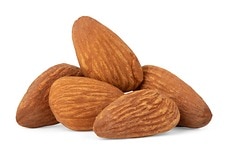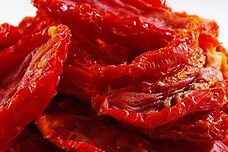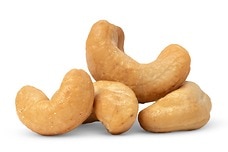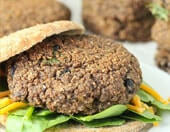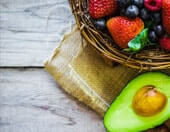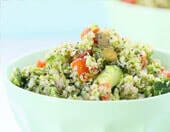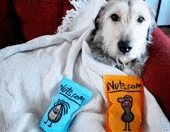Healthy Lunch Ideas for Home and Dining Out
Breakfast is often dubbed the most important meal of the day, but lunch is just as essential to your health and requires just as much consideration. Choosing the right lunch can make the difference between ravenous hunger by mid-afternoon and a focused, productive end to your work day.
So, What Nutrients Define a Healthy Lunch?
Eating breakfast gives your body the wake-up call it needs, providing energy from protein and carbohydrates. As your breakfast is metabolized, however, your blood sugar begins to drop and hunger pangs begin to set in (Wisse, 2014). Eating a healthy midday meal is absolutely necessary to restore your energy levels and prevent mid-afternoon fatigue.
The most important components of a healthy lunch are complex carbohydrates, lean protein, and healthy unsaturated fat. These macronutrients are broken down into energy that your body uses as fuel throughout the afternoon. Skipping lunch or eating an unhealthy meal may cause your blood sugar to spike sharply but drop soon thereafter. This leaves you vulnerable to intense food cravings throughout the afternoon, making you more likely to indulge in unhealthy snacks.
Dietary fiber is another essential component of a good lunch. Fiber is the roughage in plants that your body cannot digest. Soluble fiber dissolves in water, creating a gel that helps to regulate glucose levels. Adding foods rich in soluble fiber to your lunch increase satiety and prevent hunger pangs (Howarth, Saltzman, & Roberts, 2001). Oats, beans, apples, oranges, carrots, peas, and barley are simply some of the sources of dietary fiber that you can include in your lunch box.
What Are Some Good Combinations of Whole Foods to Make Nutritious Lunches?
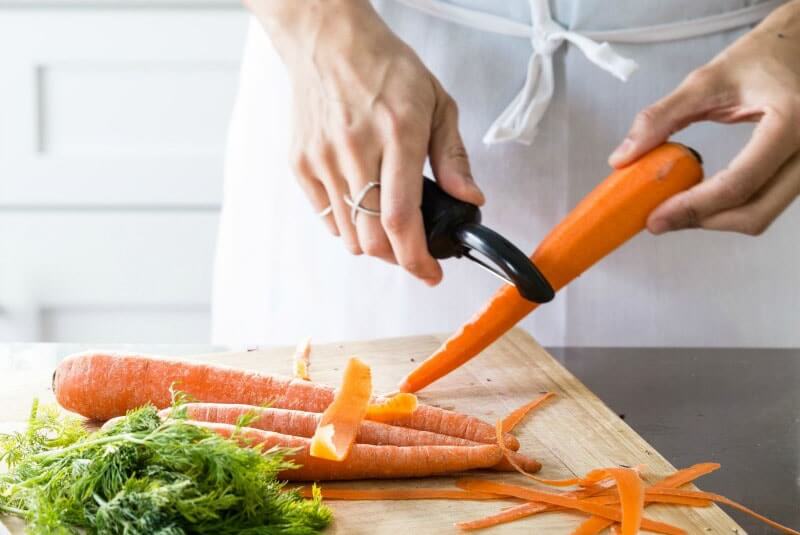
Knowing the nutrients that go into a healthy lunch is all well and good, but without knowing which foods provide all of these nutrients in a flavorful combination- it's not going to do you much good. Forunately, there's a simple formula for creating the perfect lunch that lends itself to infinite variety:
- Focus on fiber-rich vegetables and complex carbohydrates.
- Add lean protein to further boost your energy.
That's it! Follow those two simple steps for a lunch that is guaranteed to get you through the day. A perfect example of this formula in action is a simple salad that can use any of dozens of ingredients to supply each of the nutritional components discussed.
Start with a bed of mixed salad greens topped with tomatoes, peppers, diced red onions, cucumbers, or corn then mix in your choice of complex carbohydrates, such as wheat berries, bulgur, barley, quinoa or farro. Top the salad with nuts, seeds, or legumes and mix in a small amount of olive oil and balsamic vinegar.
Alternatively, make a miniature sandwich on a whole-wheat roll with a bed of lettuce, tomatoes, grilled chicken or seasoned and baked tofu, and a slice of avocado to boost your intake of heart-healthy polyunsaturated and monounsaturated fats.
This basic lunch formula is readily adaptable to the foods you have on hand. Consider sandwiches, whole-wheat pasta salad, veggie wraps, pita pockets with hummus and vegetables, or fish on a bed of brown rice. Packing a healthy lunch the night before makes it easier for you to use up spare ingredients and avoid tossing together a sorry excuse for a lunch just before you dash out the door.
Choosing a Healthy Lunch When You Go Out
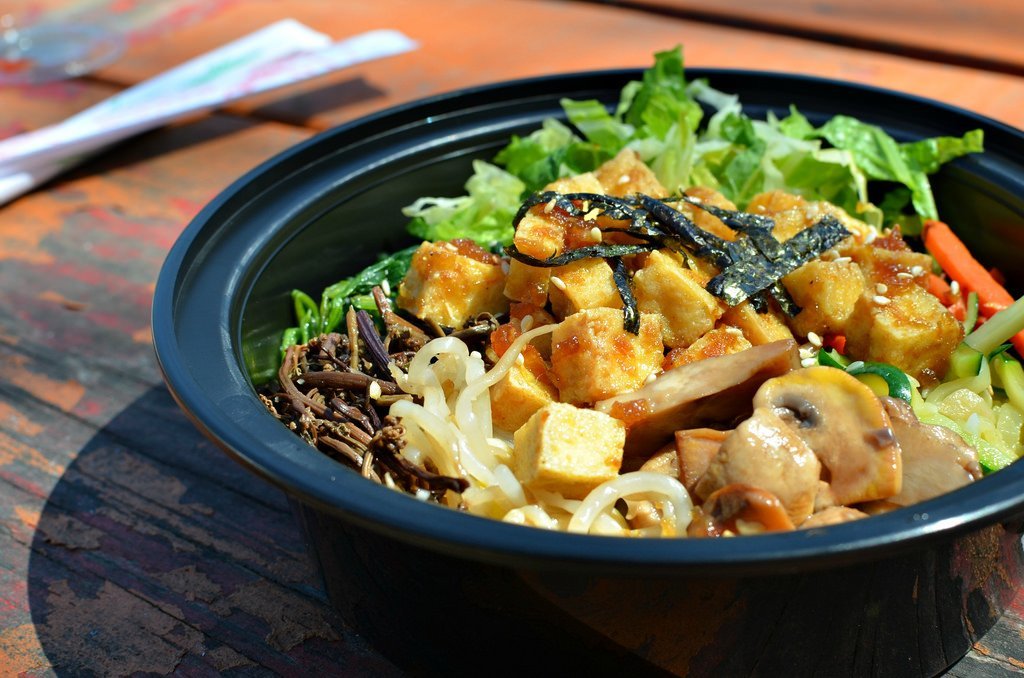
Listen- we've all had a healthy lunch packed and ready to go, when all of a sudden we're bombarded by coworkers that want to try the new restaurant down the street. You can tell them you brought your lunch, but they're not taking "no" for an answer. Don't worry- there's a way to stick to your eating plan even when heading out to the unhealthiest of restaurants. But- it's not always as simple as it seems.
Some people reflexively scan the salad menu when looking for healthy choices; however, not all salads are created equal. For instance, a chicken caesar salad at a restaurant can be a whopping 1,510 calories, containing 16 grams of saturated fat and 1,450 milligrams of sodium (Cheesecake Factory Nutrition, 2016). Opting for grilled salmon, a cup of soup with house salad, or a turkey sandwich on whole grain bread are all healthier choices.
In general, the same rules for making your own lunch apply when eating out. Look for meals that prioritize vegetables and whole grains. Be wary of fat-laden dressings, cheesy toppings, and creamy dishes, all of which add unnecessary calories and fat to your meal (Johns Hopkins Bloomberg School of Public Health, n.d.).
Try These Healthy Lunch Recipes
Eating healthy lunches can be made more affordable and more manageable with the proper preparation. Try these recipes to create a lavish lunch that still meets all your nutritional needs, and find a full list of our favorite lunch recipes here.
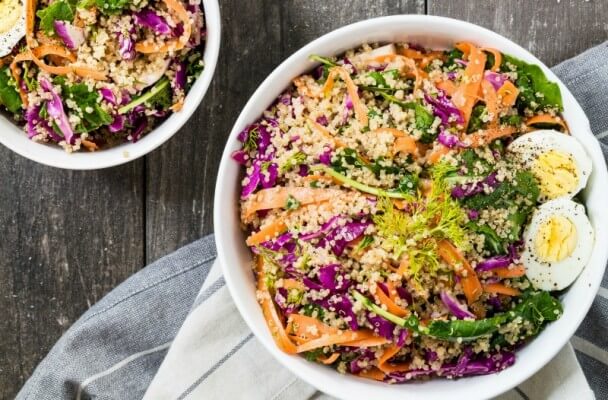
Kale Quinoa Salad Recipe
This kale quinoa salad combines two superb superfoods to supply a hearty helping of the nutrients you need to power you through the day.
Ingredients: Quinoa, fresh baby kale, purple cabbage, carrots, fresh dill, boiled eggs, rice wine, extra virgin olive oil, black pepper.
Total Time: 25 minutes
| Yield: 8 servings
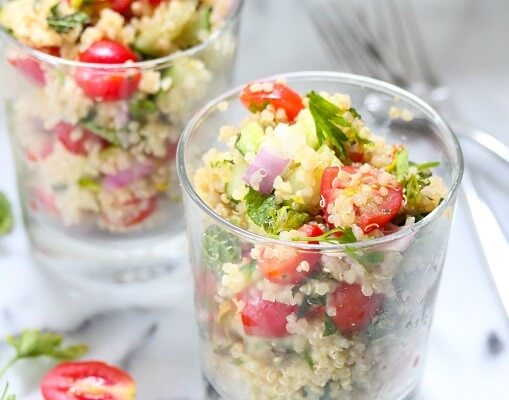
Quinoa Tabbouleh Salad Recipe {gluten-free}
This Mediterranean salad makes for a lean meal that is surprisingly filling. Add this traditional dish to your lunch lineup for a palatable plate!
Ingredients: Quinoa, cherry tomatoes, red onion, cucumber, extra virgin olive oil, balsamic vinegar, fresh parsley, fresh mint, black pepper, salt.
Total Time: 40 minutes
| Yield: 4 servings
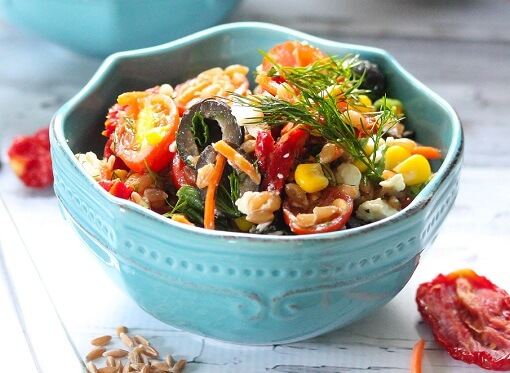
Farro Vegetable Salad Recipe
Another Mediterranean salad with a surprisingly scrumptious savor, this salad offers a filling plate that will keep you alert and focused.
Ingredients: Organic farro, sun dried tomatoes, frozen corn (thawed), scallions, black olives, feta cheese, cherry tomatoes, shredded carrots, salt, fresh dill, fresh mint, extra virgin olive oil, balsamic vinegar.
Total Time: 1 hour
| Yield: 6 servings
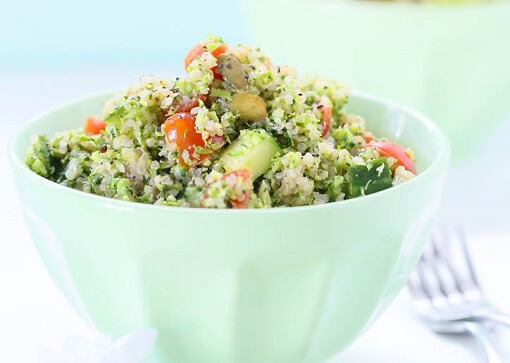
Broccoli Quinoa Salad Recipe {gluten-free}
Another killer combination of two scrumptious superfoods, this broccoli quinoa salad is sure to satisfy your nutritional needs and lunchtime cravings!
Ingredients: Fresh broccoli, quinoa, cucumber, cherry tomatoes, raw pumpkin seeds, sea salt, black pepper, Dijon mustard (optional), vinegar, extra virgin olive oil, maple syrup.
Total Time: 1 hour
| Yield: 8 servings
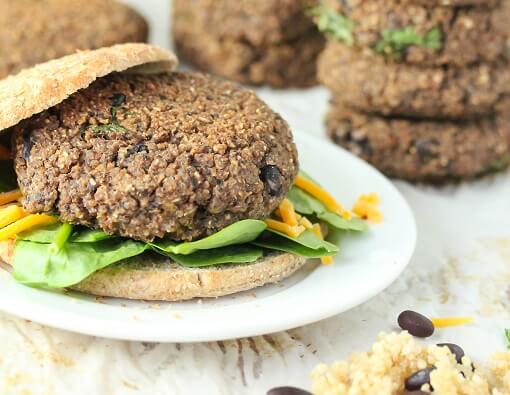
Quinoa Fritters Recipe
This fritter can be set atop two whole wheat buns or eaten “protein style” between two pieces of lettuce for a delectable, healthful burger substitute.
Ingredients: Quinoa, black beans, gluten-free rolled oats, egg, cumin powder, salt, cilantro.
Total Time: 25 minutes
| Yield: 12 medium-sized fritters
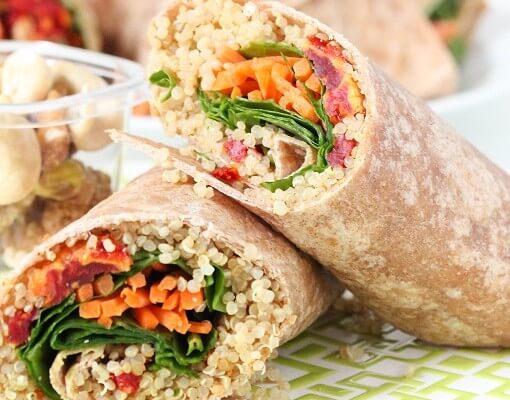
Quinoa Veggie Wrap Recipe {vegan}
This simple wrap supplies the total package: all the nutrition you need in a midday meal in a compact and delectable snack.
Ingredients: Tortilla wraps, quinoa, hummus, fresh spinach, sun-tomatoes, shredded carrots.
Total Time: 30 minutes
| Yield: 4 wraps
Ingredients for a Healthy Lunch
The following ingredients can help make a myriad of different recipes that perfectly fit the criteria for a healthy lunch. Consider keeping these lunch staples in your pantry, and expirement to discover your favorite dishes!
Healthy Eating
- Healthy Snacks
- Healthy Highlights
- 5 Uses for Cacao Powder
- 5 Ways to Eat Farro
- 6 Best Gluten-Free Foods
- Alcohol and the Body
- Almond Flour Recipes
- Anti-Aging Superfoods
- Beat the Afternoon Slump
- Benefits of a Plant-Based Diet
- Benefits of Baobab
- Benefits of Cashews
- Benefits of Coconut Oil for Hair
- Benefits of Coconuts
- Benefits of Dates
- Benefits of Fenugreek
- Benefits of Garcinia Cambogia
- Benefits of Goji Berries
- Benefits of Kale Chips
- Benefits of Monk Fruit Sweetener
- Benefits of Peanuts
- Benefits of Pecans
- Benefits of Pistachios
- Benefits of Pumpkin Seeds
- Benefits of Spelt Flour
- Benefits of Steel Cut Oats
- Benefits of Sunflower Seeds
- Benefits of Tiger Nuts
- Benefits of Turmeric
- Benefits of Walnuts
- Benefits of Wheatgrass
- Best Food Fads
- Cacao vs Cocoa
- Caffeine-Free Energy Foods
- Chocolate That's Good for You
- Diet vs. Exercise
- Fat Burning Foods
- Food Myths Debunked
- Foods for Bone Density
- Foods for Colon Health
- Foods for Healthy Hair
- Foods for Healthy Skin
- Foods to Help Sleep
- Foods to Reduce Stress
- Green Tea Benefits
- Healthy Baking Flours
- Heart Healthy Habits
- High Protein Health Risks
- How to Boost Your Metabolism
- How to Lose Weight While Aging
- How to Throw a Vegan BBQ
- Kaniwa vs Quinoa
- Little Health Foods
- Low-Carb: Fad or Friend?
- Making Healthier Desserts
- Mediterranean Diet Meal Plan
- Natural Beauty Products
- Nuts for Weight Loss
- Preparing Vegan Meals
- Preventing Muscle Degeneration
- Rare Superfoods
- Reduce Sugar Intake
- Save Time By Going Vegan
- Smarter Snack Swaps
- Smoothie Ingredients
- Soy Protein vs Whey Protein
- Starting a Plant-Based Diet
- Steel Cut vs Rolled Oats
- Sugar Substitutes
- Vegan Proteins
- Vegan Substitutions for Fall Recipes
- Why Go Vegan
- Healthy Recipes
- Sports Nutrition
- Nutrition and Special Diets
- 21 Day Fix
- 5 Popular Diet Similarities
- Alkaline Diet
- Anti-Inflammatory Diet
- Calorie Counting
- Carb Cycling Diet
- Celiac Disease
- Cholesterol
- Clean Eating
- Crohn's Disease
- DASH Diet
- Detox Diet
- Diabetes
- Diabetes Diet
- Diet Pill Dangers
- Fat Burning Foods
- Gluten-free Diet
- Glycemic Index
- Heart Health
- High Blood Pressure Diet
- High Fiber Foods
- How to Eat Healthy
- How to Lower Blood Pressure
- Hypertension
- IBS Diet
- Ketogenic Diet
- Liquid Diet
- Low GI Foods
- Low-Carb Diet and Foods
- Low-Fat High-Carb Diet
- Mediterranean Diet
- Mediterranean Diet Foods
- Military Diet
- Nutrition Labels Explained
- Paleo Diet
- Raw Food Diet
- Superfoods
- Sustainable Weight Loss
- Thrive Diet
- Vegan Diet
- Vegetarian Diet
- Weight Loss Shakes
- Whole30
- Vitamins, Minerals & Nutrients


